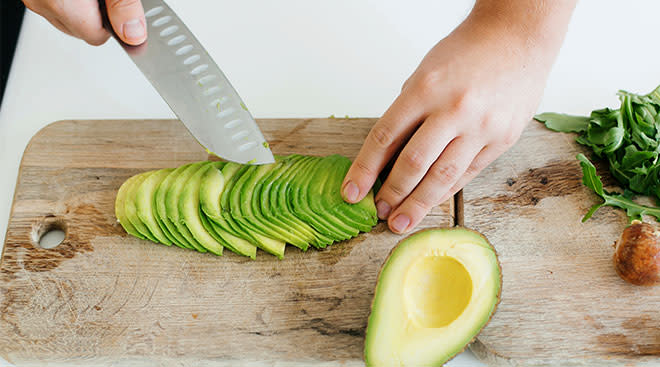How to Night Wean Baby
Life with a newborn can be exciting, but also exhausting. Luckily, when it comes to finally getting more sleep, you can bet that there’s light at the end of the proverbial tunnel. At some point, baby will sleep for hours—yes, that’s hours with an “s”!—on end, and you’ll be able to, once again, indulge in six, seven, maybe even eight hours of sleep, and feel human again. One turning point in yours and baby’s sleep? Night weaning. Ideally, night weaning occurs when baby no longer wakes up because they’re no longer hungry, and you follow their lead. But, of course, it’s not always this easy. Baby may need more time than you have patience for, or they may simply just want comfort rather than food. For whatever reason, you may have to urge baby along the night weaning process. And, of course, as with most changes in routine, the transition process can be fraught with doubt: Is baby ready? Are they hungry? Are they getting enough to eat? We’ve got the expert advice you need on night weaning so that both you and baby can feel good about it in the morning.
The short answer is at 4 months. Younger babies, whether breast- or bottle-fed, need to interrupt their (and your) sleep because they’re hungry and need the additional calories. But “by 4 months, most can sleep through the night,” says T.J. Gold, MD, a pediatrician at Tribeca Pediatrics in Brooklyn, New York. By this age, baby’s liver has completely matured and makes glucose overnight, which keeps them from feeling hungry. They’re also able to eat enough during the day to keep up with their calorie needs. By now, babies can take in 28 to 32 ounces of formula or breast milk a day, explains Russell Horton, DO, a pediatrician with Banner Ironwood Medical Center in Queen Creek, Arizona. As a result, they can also sleep at least five hours at a stretch and, by age one (when they’re already eating solids), for around 10 hours.
Remember that all babies are different and will be ready to stop night feeding at different times. Yours might need a few more weeks (or be ready sooner!) and that’s totally fine. When babies are ready for night weaning, they’ll show some signs. Here’s what you should look out for:
- Baby sucks a little then falls asleep. This suggests baby’s not actually eating for nutrition but for your warm, snuggly bosom. While cuddles with baby are always welcome, if baby’s feeding at night primarily for the cuddles, it means they’re ready to night wean
- Baby eats solid foods during the day. If this is happening it’s time to consider night weaning. Solids offer more sustenance than milk alone, which means you don’t have to worry about whether baby’s getting enough calories
- Baby sleeps for longer stretches or even through the night. If baby’s sleeping through the night, it means they feel satisfied and don’t need to wake for the extra calories. It also means you can proceed to start night weaning
Some strategies for how to night wean are similar to how to stop breastfeeding in general. In both cases it helps to have a plan, and, in general, gentle weaning is the best approach. Suddenly changing a child’s behavior can be stressful, especially during an already trying time, Horton says. For a smoother transition, try the following steps:
- Check in with your pediatrician before you start night weaning. If baby is showing the signs explained above, then chances are they’re ready. But it’s always best to get the green-light from their provider that baby’s ready for night weaning from a nutritional standpoint
- Shorten your night feedings by a few minutes each night. “Continue to do so until baby isn’t waking for feedings anymore,” Horton says. This can typically take anywhere from one to two weeks
- Offer breast feedings more frequently during the afternoon and early evening. Try feeding every two to three hours between 1 p.m. and 7 p.m. This should help baby feel full by the time they’re ready for bed
- Ensure baby gets enough nutrient-rich foods during the day. Helping baby get the calories and nutrients they need during the day makes it more likely they won’t get hungry and need a night feeding. One way to do this is to slowly introduce solids if baby is ready. (This typically occurs at about 4 months old—which happens to be around the time most babies can sleep through the night.) Consider starting with foods such as rice cereal and other grains made for babies, and then moving to fruits, vegetables and even pureed proteins
Night weaning can be a challenge for baby and parents alike. Along with the steps above, to make the process as easy as possible, try the following expert tips:
- Separate eating and feeding. For babies who feed not for calories but for comfort, the key is to separate eating from falling asleep. “If baby thinks they need to eat or suckle to fall back asleep, they’ll demand that,” says Ari Brown, MD, FAAP, founder of 411 Pediatrics in Austin, Texas. In this case, night weaning cold turkey may actually be an effective strategy
- Teach baby how to self-soothe: Not only is this going to be helpful for the night weaning process, but being able to put themselves back to sleep is a great skill for baby to have throughout their life. As baby learns there’s no milk to be had, they’ll slowly adapt to new ways to soothe themselves
- Empty your breast before bed: This can help keep you comfortable as baby ceases their night feedings. As Lisa, a mother of four who’s currently nursing 5-month-old twins says, “I’ve sort of trained my body. I pump once at midnight and then in the morning around 8 or 9.” Until your supply wanes, any overnight leakage could be pumped or squeezed out a little, but not completely. (Otherwise, your breast will continue to “think” it needs to make milk at night.) Your milk production should eventually begin to wind down in response to the new routine
Night weaning can be hard at first—on baby and you. But hang in there and know this too will get easier with time.
Please note: The Bump and the materials and information it contains are not intended to, and do not constitute, medical or other health advice or diagnosis and should not be used as such. You should always consult with a qualified physician or health professional about your specific circumstances.
Plus, more from The Bump:
Ari Brown, MD, FAAP, is a pediatrician with over 20 years of experience and the founder of 411 Pediatrics in Austin, Texas. She earned her medical degree from Baylor College of Medicine and completed her general pediatric residency at Harvard Medical School/Children’s Hospital Boston.
T.J. Gold, MD, is a pediatrician at Tribeca Pediatrics in Brooklyn, New York. She earned her medical degree from Ross University School of Medicine and completed her residency at SUNY Downstate Children’s Hospital in Brooklyn, New York.
Russell Horton, DO, is a pediatrician with Banner Ironwood Medical Center in Queen Creek, Arizona. He earned his medical degree from Arizona College of Osteopathic Medicine of Midwestern University.
Learn how we ensure the accuracy of our content through our editorial and medical review process.
Navigate forward to interact with the calendar and select a date. Press the question mark key to get the keyboard shortcuts for changing dates.




















































